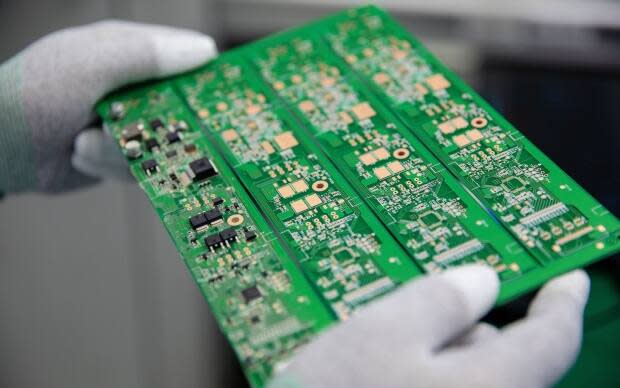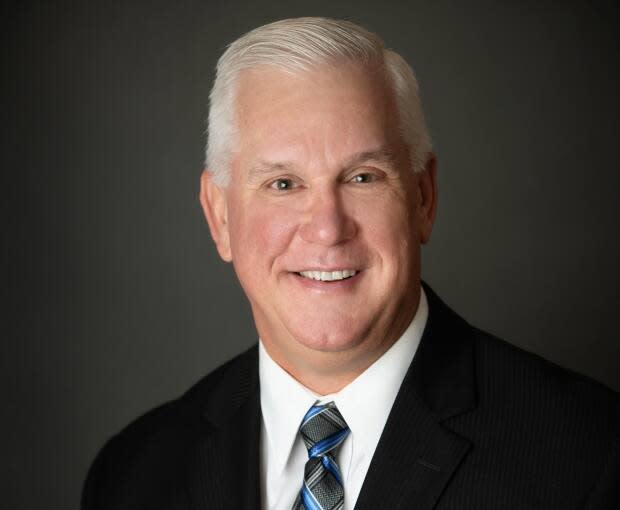Car and truck sales still suffering in Alberta with low inventory, high interest rates, inflation

New car and truck sales in Alberta are still suffering from a number of factors, including low inventory, high interest rates and the state of economic uncertainty across the country.
The number of new vehicles sold in Alberta decreased by four per cent on a year-over-year basis in June, according to a report by ATB Financial. But the situation is not unique to Alberta.
Nationally, the number of vehicles sold was down 10 per cent in June compared with the same month last year.
Rob Roach, deputy chief economist at ATB Financial, said car and truck sales in Alberta are still below pre-pandemic levels.
"The pandemic hit in 2020 and a number of car lots basically had to close. People weren't out buying, and they were concerned about spending money," he said.
While things did bounce back a bit in 2021, Roach said vehicle sales were still negatively affected by the lack of inventory and global shortage of microchips. This year, the situation has only gotten worse with increasing interest rates and the economic impact of the war in Ukraine — a country that happens to be a large producer of wiring harnesses, a key component for the electrical operations in cars.

In the first half of this year, the number of new cars and trucks sold in Alberta was 19 per cent lower than in the same period in 2019. Across the country, vehicle sales between January and June of 2022 were down 21 per cent compared with the first half of 2019.
Roach said that even before the pandemic, vehicle sales were on a downward trend in Alberta. The province's economy simply is not as strong as it was in 2014, and with less extra money to spend, individuals and businesses are not purchasing as many new vehicles, Roach said.
Empty-looking lots across the province
Gerald Wood, president of the Motor Dealers' Association of Alberta, said auto dealers in the province are facing many challenges after more than two years of the pandemic, but demand still remains fairly high. The issue is supply hasn't been able to keep up.
Wood said the low inventory situation is not exactly as bad as it may appear.
"Around the province of Alberta, you're seeing lots of [dealership] lots that look like they're empty. In some cases, they actually are," he said.
"Lots of people look and go, 'Wow, they must not be selling anything.'"
However, Wood said, what often happens now is most vehicles will already be sold by the time they arrive at a dealership. So there just hasn't been enough product to display at lots.
New vehicle sales in Alberta
The high price of vehicles has been helping auto dealers, Wood said. The value of vehicle sales in Alberta increased by eight per cent this June compared with the same month last year, according to ATB. That number was only two per cent on the national scale.
Despite inflation, the value of vehicle sales for the entire first half of 2022 was down by five per cent in Alberta when compared with the same period in 2019. Nationally, the value of sales decreased by eight per cent in that same time period comparison.

According to Wood, the whole process of selling cars has shifted over the past two years. Rather than taking a test drive and picking up a car in fairly short order, many consumers are now buying through factory orders, Wood said.
"So the consumer comes in, identifies what components they would like on the vehicle, and then the dealership works with the manufacturer to get time on the production schedule. And then it gets built, gets shipped," he said.
What used to be a six- to eight-week process of buying a new car has almost doubled in time, Wood said.
Ken Sorensen, executive director for the Alberta Automotive Recyclers and Dismantlers Association, said low new vehicle inventory has actually been helping his industry.
Sorensen finds more people are hanging on to their cars and trucks longer because of the difficulty of buying new vehicles. When those older cars need repairs, consumers are having trouble finding parts at dealerships, Sorensen said.
"If you go to a dealership and they're telling you … maybe a four-month delay on the parts, why not pick up that same part from an auto recycler?" he said.
Future outlook and consumer tips
Roach said the auto industry is expecting the microchip shortage to resolve eventually, but the timeline for that is unclear, especially as geopolitical conflict continues in Taiwan — a major computer chip producer.
And even if the microchip shortage eases in the near future, Roach said that as long as interest rates are high and there's general economic uncertainty, new vehicle sales won't be soaring any time soon.
"In the short-term, probably still a difficult period ahead for auto dealers in Alberta and really across the country," he said.
For the average consumer looking to buy a new car or truck, Wood recommends waiting for a factory order so buyers can get the exact features in a vehicle they're looking for, rather than having no luck finding something similar at a dealer's lot.
And his biggest tip: "Patience is key."

